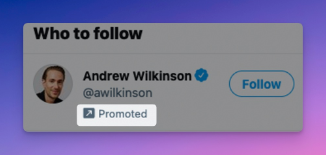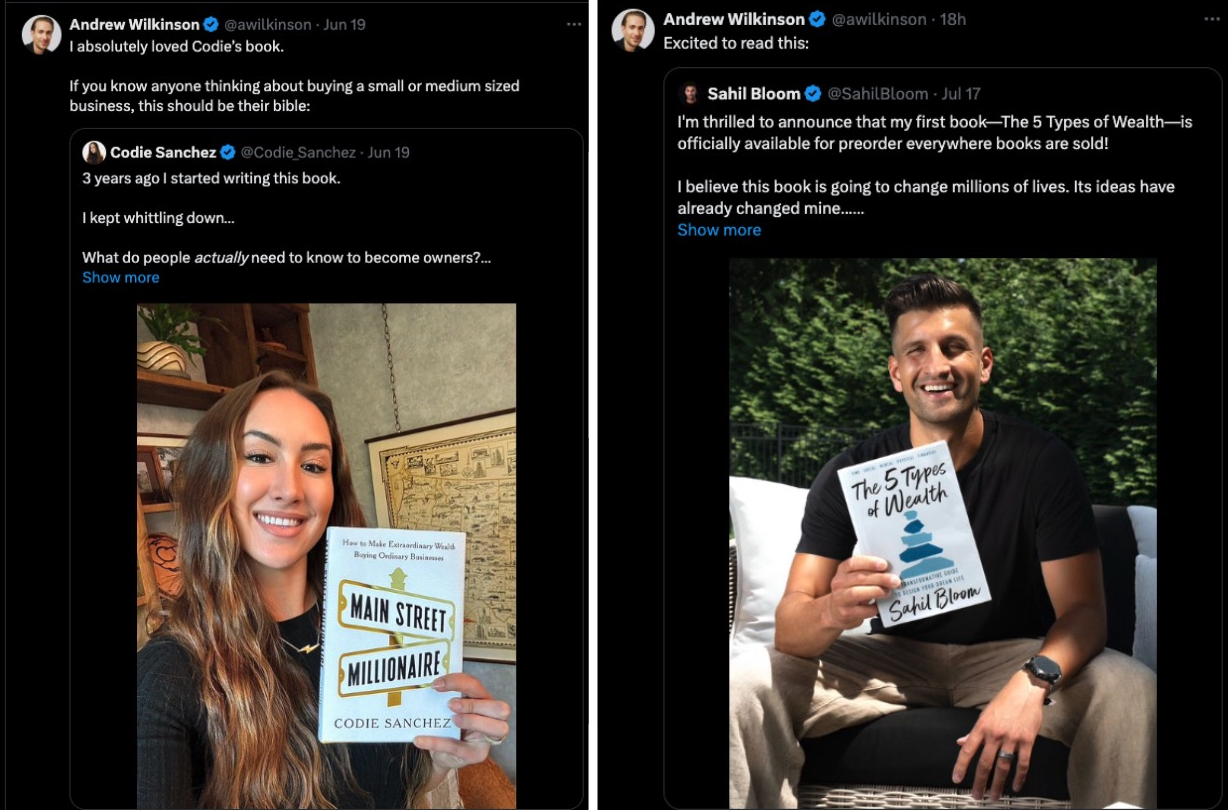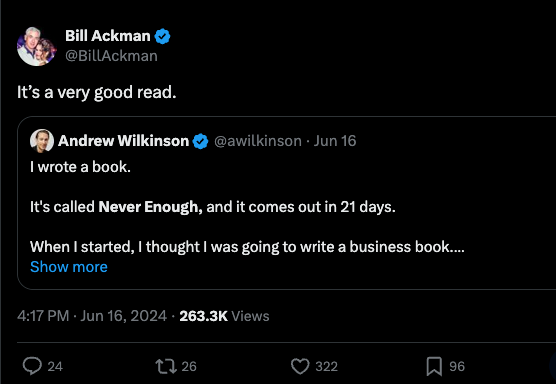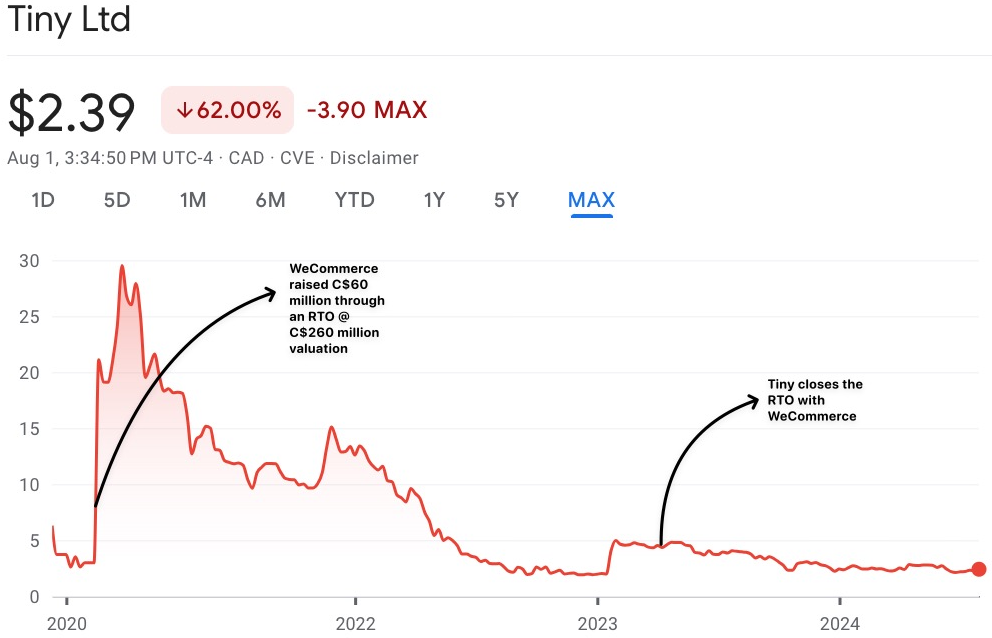In early July, Victoria-based entrepreneur Andrew Wilkinson, the self-styled “Warren Buffett of Tech'' launched a book called “Never Enough: From Barista to Billionaire.” In a span of about 15 years, Andrew went from being a dropout barista to designing websites to palling around with the likes of Bill Ackman, Charlie Munger, among other leading lights of the finance world. He may not be a household name among the Laurentian business elites. But he’s semi-big in US tech circles. No less an authority than CNBC - home of modern-day Socrates, James J. Cramer - labeled him a billionaire in 2020. A Canadian billionaire at age 34! Wilkinson would have reached that status faster than Jeff Bezos, Elon Musk and Warren Buffett. More impressively, unlike those three, Andrew never had outside investors until he partnered with Bill Ackman and Howard Marks to buy a business when he was around 33 years of age. And this all started from designing websites - his first sale was for $2,500. How does this happen? What is Andrew’s secret sauce? Was he ever a “billionaire", as that term is commonly understood by mathematicians?
Certainly, Andrew has at times shown an ability to make big scores from non-obvious investments. The best example is his friendship with Bill Ackman. They first met after Andrew won a charity lunch auction for $58k. Andrew then sought and obtained backing from Bill for a $20+ million deal in 2019— a year before being described as a billionaire by CNBC. Charlie Munger might have been even more enamored. Charlie chaired a publicly-traded software business called The Daily Journal. Andrew has claimed that in his first meeting with Charlie Munger, the latter proposed a merger between The Daily Journal and Andrew’s then-private holding company, Tiny. Munger cultists know he was very closely associated with The Daily Journal - he was a director there longer than he was with Berkshire Hathaway. How does a whippersnapper from Victoria become a potential business heir of Charlie friggin’ Munger?
Andrew has a certain cunning and an instinct for incubating businesses and getting them off the ground. He claims to have booked $15k in web design business in his very first month as a total newbie. But where Andrew is truly world-class is that he is a master at creating perceptions far beyond mundane reality. At his core, Andrew is a good writer and an exceptional story-teller. He was briefly in a journalism program at Ryerson. Andrew has used the writing playbook to propel himself, a playbook that was also favored by Gwyneth Paltrow (her Goop! started as a weekly newsletter, before selling vaj-jay-jay contraptions I am not familiar with).
Andrew has a gift for finding the perfect angle for recounting things that happen to him. He is shrewd in pursuing attention, whether to market his businesses or raise his profile. Good writers are sometimes akin to a magician - misdirecting the reader’s mind and then sucker-punching them. This may have real-world applications too. Over two decades, Andrew, the journalism dropout, has become a multi-media powerhouse at misdirecting minds and shaping perceptions. He deploys for this a much more subtle and sophisticated playbook than that of the other great perception-shaping contemporary, Donald J. Trump. For one thing, Andrew is much more candid about some of his mistakes. But that may be a calculation too.
“I was an okay designer. I was an okay web developer. But I was a good talker.” - Andrew Wilkinson
Andrew worked relentlessly to raise his profile, particularly during the pandemic, driven by boredom. Through his Twitter account, which now has over 275,000 followers, he began to share business and life lessons.

He then became a frequent guest on the “business guru” podcast circuit, where the riche, louche and gauche discuss How to make millions. Cars are getting ever safer, computers are getting ever faster. You would think a feature of a modern, fragmented media landscape would be that we can get ever closer to the truth. On the contrary, all these podcasts rest on the basis of self-reinforcing loops of “social proof”, rather than the truth. In countless hours of gabfests featuring Andrew Wilkinson, you will not hear a single discordant note. After all, a guest today can be a host tomorrow, so you don’t want to upset the apple cart.
“We are caught in an inescapable network of mutuality, tied in a single garment of destiny. Whatever affects one directly, affects all indirectly.”
― Martin Luther King Jr.

What exactly happened during the big Charlie Munger meeting?
To be clear, Andrew’s stories generally have some basis in reality. But they may also include embellishments or fabrications. Elements of many Andrew stories are contradicted either directly by himself or people close to him. Here’s an example. That big Charlie Munger meeting. A big event in Andrew’s life, from only a few years ago. He opens his book with that story. It’s also a story that was just excerpted in Fortune magazine, with a photo supplied as evidence. The meeting happened after an introduction from Andrew Marks, the son of famed investor Howard Marks. Marks Jr said that Munger had a problem and that Andrew could help him.
Andrew Wilkinson’s version of the Charlie Munger meeting
According to Andrew’s book, after having dinner at Munger’s home, they went to his living room, where Andrew’s right-hand man, Chris Sparling explained Tiny’s revenue and growth numbers, “all of which were phenomenal by anyone’s standards”, according to Wilkinson. After Sparling concluded, Munger only said “Good.” Then it was Andrew’s turn to speak. He told his personal story. While Andrew talked, Munger seemed like a “stone statue” and Andrew couldn’t tell if Munger was “unimpressed, or bored, or what.” Wilkinson finally caught Munger’s attention after he said: “We have no intent on ever going public.” Munger, said “[being public] creates a slew of opportunities.” and proceeded to explain the benefits of being a public company.1
According to Andrew, In an unexpected turn of events, Charlie Munger then said, “You know, there's another way for you to go public.” Andrew replied, “What’s that?” Munger said:
“Well, somebody needs to take over for us at The Daily Journal. We could just merge our companies and you two could take the reins. You have all these wonderful technology businesses, and we have hundreds of millions of dollars that need investing and a software business that could use your expertise.”2
The Daily Journal is an old-school software company Munger chaired, involved primarily in courtroom transcription technology. It has a market cap of US$ 641 million.
In the book, Andrew provides a vivid description of the moment after Munger made the suggestion to merge. Almost 200 pages later, Andrew says that he realized he didn’t want to merge mainly because he would lose his freedom, and it would no longer be his business. He talked to Sparling and then they told Munger, “who understood and completely respected their decision.” They ended up referring a new CEO candidate for The Daily Journal.
It is definitely an incredible story. Charlie Munger steps out of his circle of competence and labeled Tiny’s businesses as “wonderful technology businesses.” He then asked Wilkinson to merge their companies. And all this, the first time they met. Love at first sight.
Chris Sparling’s version of the Charlie Munger meeting
Well, I hate to be unsentimental, but there’s another version of that story - from Andrew’s business partner Chris Sparling himself. Chris shared a different recollection of events surrounding Munger, during the VALUE x BRK conference in May 2024.
Sparling said that Munger had a succession problem at The Daily Journal and they were invited to discuss it at Charlie’s place. During a varied conversation, they asked about The Daily Journal but it was unclear how they could help. So they went back to Victoria.
Back in Victoria, they decided to write Charlie a letter, telling their story and “a few different ideas on what they saw as the future of us and them.” That letter led to a second meeting with Munger. Sparling described the second meeting as follows:
“We told Charlie we were eager to help. Confident that we can make a significant difference, but we’re not managers for hire. By this point, my partner and I owned about 30 to 40 businesses and for us to commit we’d have to be meaningful owners in The Daily Journal, and the only way that could really happen is if we merged. We thought this was being a bit of a bold idea, but Charlie was totally unfazed, he actually said he liked it. And this kicked off the negotiation with Charlie.”
Sparling said that the merger didn’t go through because they realized that their decision was driven by their ego—to become successors to their idol rather than really helping Munger. Chris says they ended up helping Munger by introducing him to Steven Myhill-Jones, now the CEO of The Daily Journal.
Munger meeting per Chris Sparling
Which version is accurate? Did Charlie propose a merger first or did Andrew? And why was it not consummated? Andrew’s version of Charlie making the first move provides incredible validation for Tiny’s business. Yet, it is contradicted by his partner, who was also there. Who’s telling the truth? We’ll never know, Charlie’s dead.
Cashing in

A careful study of Andrew Wilkinson’s corpus of bullcrapology would reveal many such inconsistencies. And that’s just from the public record, who knows what he says behind the scenes. And so we’re confident in saying that the Andrew Wilkinson legend doesn’t rest on a watertight foundation of truth. Of course, image, attention and perceptions can be monetized. Bill Ackman had a high-profile fight with woke Ivy League university administrators earlier this year and not coincidentally, he tried to raise a $25-billion fund from retail investors. Andrew has his own army of followers, who are tech-savvy but maybe not the most thoughtful investors.
You recall Soros’s theory of reflexivity - the feedback loop of how perception affects reality, which in turn affects perception? Andrew’s tireless work on shaping perceptions eventually paid off. When he met Bill Ackman, Andrew certainly had a foundation of success— in 2016, two years before meeting Ackman, and 10 years after its founding, Metalab, Andrew’s web design “golden goose,” reported revenue of C$10.6 million, as gleaned from a civil lawsuit. But with Bill Ackman’s financial backing and seal of approval and Andrew’s public following, he was able to turbo-charge his empire and go public. Other people’s money - from Bill Ackman, Howard Marks, the public and debt were the fuel that propelled Andrew’s brief sojourn into the stratosphere. Unfortunately, Andrew got his hands on the largest amount of capital at the very peak in 2020-2022.
The business acquired with the backing of Ackman and Howard Marks was Pixel Union, a company that started by making Tumblr themes and then focused on Shopify themes (Themes are web design templates that get you launched quickly online. Billionaire Uber co-founder Ryan Graves, a Canadian, was also a backer.) Pixel Union then morphed into WeCommerce Holdings, which began trading on the TSX Venture in December 2020 and briefly reached a valuation of over C$1 billion. WeCommerce’s business plan was to acquire businesses related to the Shopify ecosystem, ie. tools that serve users of Shopify's e-commerce solutions. WeCommerce went public a couple of weeks before the market euphoria peaked with the GameStop short squeeze. The company’s CEO was Chris Sparling, Andrew Wilkinson’s long-time business partner. WeCommerce was like Obama’s Nobel Peace Prize—a shell of a business whose valuation rested almost entirely on what the team could acquire or build in the future.
Using proceeds from its public listing and a bank loan, during 2021 and 2022, WeCommerce went on an acquisition spree. This saw it growing its intangible assets and goodwill from C$20.75 million in 2020 to C$155.8 million in 2022.
By the end of 2022, WeCommerce reported a C$7.7 million operating loss. The market euphoria eventually dissipated, and two years after becoming public, its stock price fell by more than 90% from its peak.

Undeterred, Andrew decided to merge virtually his entire empire, i.e. his holding company Tiny, into WeCommerce in 2023. Keep in mind a significant feature of reverse takeovers: they shortcircuit the usual extensive disclosure requirements involved in going public. That is why SPACs so notoriously attract junk deals. Andrew never had to go through the rigors of an IPO. Neither did his idol Buffett - so be careful.